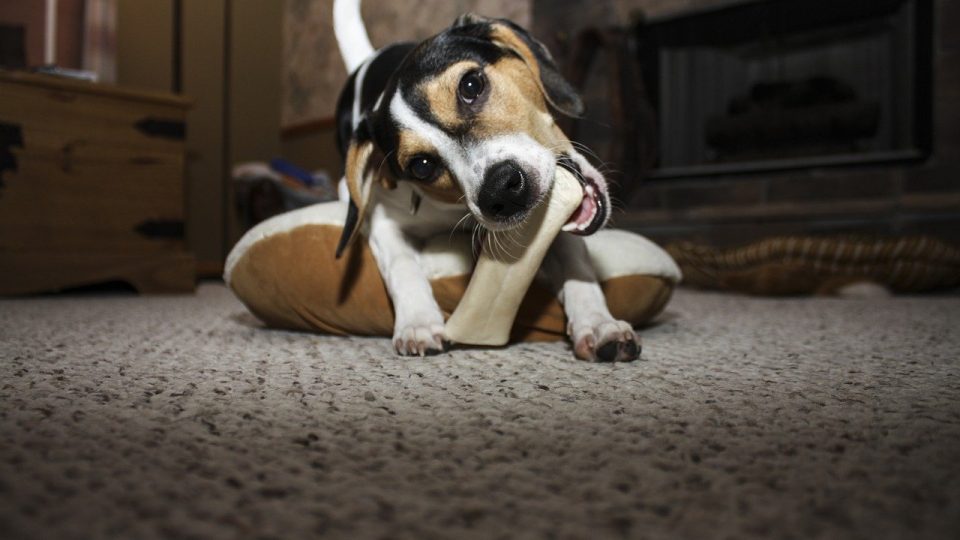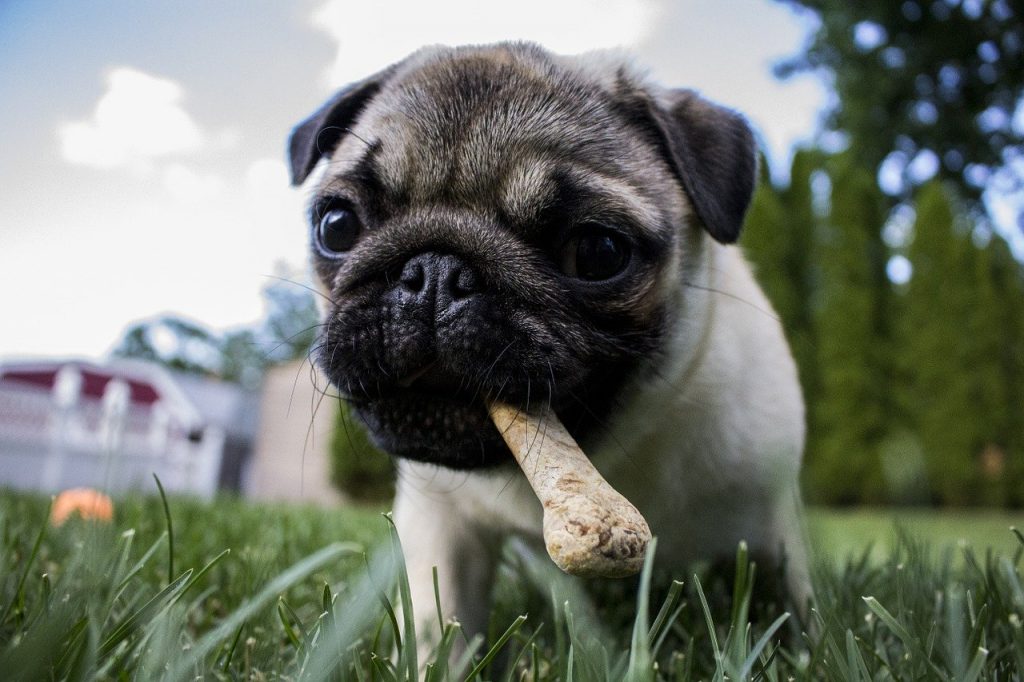- Not a substitute for professional veterinary help.
If you’ve ever spent time around a teething human, you know it can cause a little discomfort and, at times, make for a grumpy little person.
Puppies go through the same process of losing their baby teeth but if managed properly, and with the right expectations, the experience can leave your puppy better-trained and the two (or more) of you better-bonded.
Here are some tips to help you and your new pal get through puppy teething with as little discomfort as possible.
When do puppies start losing their teeth?
Puppies get their baby (also called “milk”) teeth pretty early on, usually around five to six weeks of age.
By 12-16 weeks, which is right about when you should be welcoming your puppy into your home and family, these little temporary teeth start falling out and adult teeth begin to replace them.
At about 24 weeks (six months) of age, most puppies have lost all their baby teeth and their adult teeth will be in place; by eight months, they should be fully grown in.
The AKC notes that the six-month mark as a great time to check your puppy’s mouth to make sure all the baby teeth have fallen out and that the adult teeth are coming in straight, uncracked, and unbroken.
If you think there may be an issue in there, get it straightened out with your veterinarian. Early detection and treatment can save you and you puppy a lot of grief later on.
This is also a great time to begin acclimating your puppy to tooth-brushing. Read our guide on dog teeth brushing here.
Is it painful?
Puppy teeth are generally quite small so your pup, and you, won’t likely notice them falling out–or even that they’re gone.
What can be uncomfortable for puppies is when their adult teeth come in. The space where there were about 28 tiny teeth now has to make room for 42 big teeth! “That’s a lot of activity, and it makes them want to chew on everything,” veterinary dentist, MD Redman, DVM, DAVDC, points out in New York Magazine.
Unfortunately, this process can take months. During this period you may notice blood on chew toys or even drooling when chewing–these are normal but if anything seems excessive or your puppy isn’t bright, active, and eating, check with your veterinarian.
Common teething behaviors
Dogs explore with their mouths so it is very natural for a puppy to explore pretty much everything by taking a little bite of it. Being that puppy teeth—sometimes also known as dragon’s mouth, razor smile, and dagger teeth—are extremely sharp, nipping and chewing are common complaints.
Chewing
The puppy teething weeks are important for bonding and socialization, like introducing your pooch to new people, environments, and other pets. They’re also super important for training.
Teething time is a great time to work with your puppy on learning what is, and isn’t, appropriate to chew on. Because your little one will likely want to chew on pretty much anything to help calm the discomfort of teething, you will want to be sure your house is puppy-proofed and that areas with things like cords, shoes, and fancy furniture are kept off-limits.
To help your puppy stay comfortable, PetMD recommends investing in a variety of puppy-safe, size-appropriate chew toys.
Puppy chew toys are softer than adult toys and will protect your puppy’s new teeth from breakage (we’ve got a great list of puppy chew toys here). If your puppy is chewing on something she shouldn’t, simply replace it with a chew toy.
As you introduce new toys be sure to monitor your puppy at all times. You’ll want to be sure there are no choking hazards and that toys are standing up to your baby’s bite.
If your puppy is getting bored with her toys, try switching things up by adding frozen goodies into treat-dispensing chew toys or even freezing a Kong with peanut butter in it–it keeps things interesting and feels great on throbbing gums!
If toys and redirection aren’t enough, consider using an anti-chew spray where needed. These are harmless to your puppy and tend to taste bad, which is no fun, hence discouraging chewing.
Nipping
Dogs use their mouths to explore their environments and none more so than as puppies. A puppy nip can be painful but it’s also a totally natural way for a puppy to interact with others.
If you notice when puppies play, a sharp “yelp” from one is usually about all it takes to signal to another that the playing is getting too rough.
The AKC recommends following this cue by using a loud, high-pitched “ouch!” as a signal to your puppy to stop, then immediately rewarding her with a treat or praise. She’ll get the hang of it pretty quickly if you are speaking her language.
Certified Professional Dog Trainer Shoshi Parks wrote us a whole guide to get puppies to stop nipping, including using redirection for nipping—a healthy way to let your puppy know that it’s OK to nip or chew, as long as it’s on something appropriate.
Ongoing Tooth Health
Dental health is extremely important to a dog’s overall health. According to the AVMA , periodontal disease can not only be painful for your pooch but can affect her heart, kidney, and liver health. In addition to establishing a regular oral care routine that includes brushing, a properly-balanced diet will help ensure your puppy’s pearly whites come in, and stay, strong and healthy.






